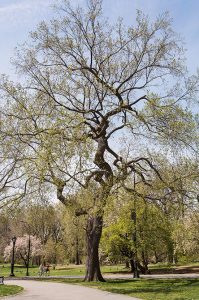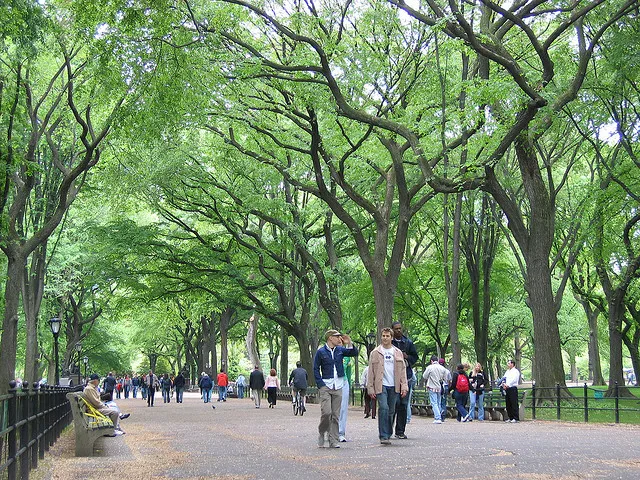In the serene realm of nature, elm trees stand tall as silent guardians, casting their graceful shadows upon the earth. With their distinctive foliage and noble stature, elms have long fascinated and inspired admirers of the natural world. Understanding these majestic trees’ diverse characteristics and species varieties can enrich our appreciation of their beauty and significance in our surroundings.
In this guide, we journeyed through the enchanting realm of elm trees, shedding light on their unique features and myriad forms. Delving into the heart of elm tree identification, we explore the subtle nuances that distinguish one species from another, empowering enthusiasts and nature lovers alike to recognize and appreciate the rich tapestry of elm diversity.
Join us as we unravel the secrets of elm tree identification, unveiling the distinctive traits and species varieties that grace landscapes around the globe. Whether you’re a seasoned arborist or an aspiring nature enthusiast, this guide serves as your compass, guiding you through the verdant labyrinth of elm trees with clarity and insight.

Overview: Unlocking the Mysteries of Elm Trees
With their towering presence and distinctive foliage, elm trees have long been revered as icons of resilience and beauty in the natural world. With their gracefully arching branches and verdant canopies, these majestic beings stand as silent sentinels, bearing witness to the passage of time and the ever-changing seasons.
In our bustling urban landscapes and tranquil countryside vistas alike, elm trees command attention, drawing the gaze of passersby and beckoning us to pause and marvel at their splendor. Yet, beyond their outward appearance lies a world of secrets waiting to be uncovered, a realm of knowledge that invites us to delve deeper into the intricate tapestry of elm tree lore.
Within the intricate patterns of their leaves and the gnarled contours of their bark, elm trees hold clues to their identity and lineage, each species bearing its unique story etched in the annals of botanical history. From the resilient American Elm, once the stalwart backbone of streets lined with green, to the exotic allure of the Chinese Elm, with its delicate foliage and mottled bark, each variety offers a glimpse into the rich diversity of the elm tree family.
In this comprehensive guide, we embark on a journey of discovery through the magical realm of elm trees, unlocking the mysteries hidden beneath their verdant cloak. From the humble acorn to the towering canopy, we explore every facet of elm tree life, shedding light on their unique characteristics, species varieties, and the factors that shape their growth and development.
Join us as we unravel the secrets of elm trees, peeling back the layers of time to reveal the hidden treasures that await those who wish to understand and appreciate the beauty of these majestic beings. From the quiet solitude of the forest clearing amid the bustling streets of the urban jungle, elm trees remain as symbols of endurance and grace, inviting us to immerse ourselves in the wonder of the natural world and find solace in the embrace of their leafy boughs.

Key Features of Elm Trees: A Comparative Analysis
Elm trees come in various species, each with unique features and characteristics. Here’s a comparison of the key features of some common elm tree species:
|
Species |
Height (ft) |
Leaf Shape |
Bark Texture |
Resistance to Disease |
|
American Elm |
80-100 |
Oval |
Furrowed |
Moderate |
|
Chinese Elm |
40-50 |
Small, Oval |
Mottled |
High |
|
English Elm |
60-80 |
Elliptical |
Rough |
Low |
|
Siberian Elm |
30-50 |
Elliptical |
Smooth |
High |
Factors to Consider When Choosing an Elm Tree
Selecting the right elm tree for your landscape requires considering several key factors to guarantee its successful growth and longevity. From climate suitability to disease resistance, here’s a detailed exploration of the aspects you should take into account before making your decision:
- Climate Suitability: Elm trees exhibit varying degrees of adaptability to different climates. Before choosing a species, assess your local climate conditions, including temperature ranges, rainfall patterns, and humidity levels. Some elm varieties thrive in temperate climates with mild winters, while others are more tolerant of extreme temperatures or drought conditions. Research the specific climate requirements of each elm species to ensure it will flourish in your area.
- Soil Conditions: Elm trees have specific soil preferences that can influence their growth and health. Execute a soil test to ascertain its pH level, drainage capacity, and nutrient content. Most elm species prefer well-drained soil with a slightly acidic to neutral pH. However, certain varieties, like Siberian Elm, exhibit greater tolerance to alkaline soils. Consider amending the soil or selecting a species that matches your soil type to optimize the tree’s root development and nutrient uptake.
- Space Availability: Elm trees come in various sizes, from compact dwarf varieties suitable for small yards to towering giants best suited for spacious landscapes. Evaluate the available space in your yard, considering both the vertical and horizontal dimensions. Consider factors such as overhead utility lines, nearby structures, and proximity to other trees or shrubs. Choose a species that fits comfortably within the available space without overcrowding or obstructing sightlines.
- Disease Resistance: Dutch elm disease, caused by a fungus transmitted by elm bark beetles, has devastated elm populations worldwide. When selecting an elm tree, prioritize species resistant to this and other common diseases, such as powdery mildew or verticillium wilt. American Elm, once iconic in American landscapes, has suffered greatly from Dutch elm disease, but newer cultivars like ‘Valley Forge’ exhibit improved resistance. Similarly, Chinese Elm and Lacebark Elm are known for their resilience to various pests and diseases, making them popular choices for urban planting.
- Aesthetic Considerations: Beyond practical considerations, aesthetics are crucial in selecting an elm tree. Consider the tree’s appearance, shape, foliage color, and seasonal interest. Some species, like the Lacebark Elm, feature exfoliating bark that adds visual interest year-round, while others, like the American Elm, boast a classic vase-shaped silhouette. Choose a variety that complements your home’s architectural style and enhances your landscape’s beauty.
Cost Comparison of Elm Tree Species
Understanding the cost implications is crucial when considering adding an elm tree to your landscape. Here, we delve deeper into the pricing of various elm tree species, providing insights into factors that influence their costs.
- American Elm:
- Cost Range: $150-$200 per tree
- American elms, known for their grandeur and iconic vase-shaped canopy, often come at a slightly higher price point due to their popularity and majestic appearance. This species boasts moderate disease resistance, making it a favored choice for urban and suburban environments where Dutch elm disease may pose a threat.
- Chinese Elm:
- Cost Range: $100-$150 per tree
- Chinese elms are valued for their adaptability and resilience. With a lower price range than American elms, they offer an attractive option for budget-conscious buyers. Despite their economical price tag, Chinese elms exhibit high resistance to diseases like Dutch elm disease, making them a dependable choice for landscaping projects.
- English Elm:
- Cost Range: $200-$250 per tree
- English elms, renowned for their graceful appearance and distinctive rough bark, typically command a higher price because of their rarity and distinctive aesthetic appeal. However, their susceptibility to diseases such as Dutch elm disease may deter some buyers despite their elegant charm.
- Siberian Elm:
- Cost Range: $80-$120 per tree
- Siberian elms offer an affordable option for those seeking a hardy and fast-growing tree. With a lower price point than other elm species, Siberian elms are valued for their smooth bark and high disease resistance. Their budget-friendly cost makes them an attractive choice for landscaping projects where cost-effectiveness is paramount.
Factors influencing the cost of elm trees include:
- Size and Age: Mature trees typically command higher prices due to their established root systems and immediate impact on the landscape.
- Nursery Reputation: Nurseries renowned for quality stock and expertise may price their elm trees higher to reflect their superior quality and health assurance.
- Location and Availability: Regional variations in demand and supply can influence the cost of elm trees, with certain species being more readily available or sought after in specific regions.
|
Species |
Cost (per tree) |
|
American Elm |
$150-$200 |
|
Chinese Elm |
$100-$150 |
|
English Elm |
$200-$250 |
|
Siberian Elm |
$80-$120 |
While American and English elms may be more expensive, their disease resistance and majestic stature make them worthwhile investments.
Maintenance and Tips for Elm Trees
Elm trees, renowned for their grandeur and longevity, require diligent care to thrive and flourish in their environment. Here are some essential maintenance practices and tips to ensure the health and vitality of your elm tree:
- Regular Pruning: Pruning is vital to maintaining the structural integrity and aesthetic appeal of elm trees. Remove dead or infected branches and branches that intersect or rub against each other, which could potentially cause harm or inhibit growth. Additionally, thinning the canopy allows for better air circulation and sunlight penetration, promoting overall tree health.
- Mulching: Spread a layer of organic mulch around the tree base to retain moisture, control soil temperature, and inhibit weed growth. Ensure the mulch layer is about 2-3 inches thick and does not touch the trunk to avoid moisture-related problems like rot or disease.
- Watering and Fertilization: Proper watering is crucial, particularly during drought or hot weather. Newly planted elm trees require regular watering to establish strong root systems. Once established, water deeply but infrequently, allowing the soil to dry out between watering sessions.
- Disease and Pest Management: Elm trees are prone to various diseases and pests, most notably Dutch elm disease and elm leaf beetles. Regularly check your elm tree for any indications of illness, such as wilting leaves, yellowing foliage, or unusual growths. Swiftly eliminate and dispose of infected plant matter to prevent the spread of disease. Consider implementing preventive measures, such as applying fungicides or insecticides, particularly in areas where these issues are prevalent.
- Soil Care: Conduct soil tests periodically to assess nutrient levels and pH balance. Elm trees prefer well-drained, slightly acidic soil with good fertility. Adjust the soil as necessary by incorporating organic materials, like compost or aged manure, to improve soil structure and nutrient availability.
- Seasonal Care: Adjust your maintenance routine according to the changing seasons. In winter, protect young elm trees from frost harm by encircling them with burlap or using tree guards. During autumn, remove fallen leaves promptly to prevent the spread of disease spores and pests. Inspect the tree for new growth in spring and address any pruning or maintenance needs before the growing season begins in earnest.
Buying Guide: Step-by-Step Process
- Assess your space and climate conditions.
- Determine the desired height and spread of the tree.
- Research suitable elm tree species for your location.
- Purchase from reputable nurseries or online suppliers.
- Follow proper planting and care instructions.
Frequently Asked Questions
- Q: Are elm trees prone to diseases? A: Some elm tree species are susceptible to certain diseases, most notably Dutch elm disease. This devastating fungal infection affects species like the American Elm (Ulmus americana), causing wilting and yellowing leaves and ultimately leading to tree death if left untreated. However, not all elm species are equally vulnerable. For example, Chinese Elm (Ulmus parvifolia) exhibits higher resistance to Dutch elm disease, making it a more resilient choice for areas prone to this ailment.
- Q: How fast do elm trees grow? A: Elm tree growth rates can vary depending on species, environmental conditions, and care practices. Most elm trees generally exhibit moderate to fast growth rates, typically averaging between 1 to 2 feet per year under optimal conditions. However, growth rates may differ between species, with some varieties growing faster than others.
- Q: Can I plant an elm tree in a small backyard? A: You can plant certain elm tree varieties in a small backyard, provided you choose a species suitable for confined spaces. While traditional large elm species like the American Elm may not be ideal for small yards due to their expansive root systems and canopy spread, there are dwarf and compact cultivars available that are better suited for urban landscapes. Varieties such as Lacebark Elm (Ulmus parvifolia ‘Lacebark’) and Drake Elm (Ulmus parvifolia ‘Drake’) are popular for smaller yards due to their more manageable size and adaptable growth habits.
- Q: How do I protect my elm tree from pests and diseases? A: Protecting elm trees from pests and diseases requires a proactive tree care and maintenance approach. Regularly inspecting your elm tree for signs of pest infestation or disease symptoms is essential for early detection and prompt treatment. Implementing cultural practices such as proper pruning, watering, and mulching can help improve tree vigor and resilience against stressors. Additionally, consider consulting with a certified arborist or local extension service for specific recommendations on pest and disease management strategies tailored to your region and elm tree species.
- Q: Are there any environmental benefits to planting elm trees? A: Yes, elm trees provide a range of environmental benefits that contribute to overall ecosystem health and quality of life. As deciduous trees, elms offer shade and cooling effects during hot summer months, reducing energy consumption for air conditioning. Their expansive root systems help stabilize soil, prevent erosion, and absorb excess water, mitigating the risk of flooding and improving water quality. Furthermore, elm trees serve as habitat and food sources for various wildlife species, enhancing biodiversity in urban and natural landscapes.
Key Takeaways
- Understanding Species Varieties: Elm trees encompass various species, each with unique characteristics and adaptability. Prioritize species selection based on climate suitability and resistance to prevalent diseases like Dutch elm disease. Researching and selecting the right species ensures optimal growth and longevity for your elm tree.
- Environmental Considerations: Assess your local climate, soil conditions, and available space before planting an elm tree. Different species thrive in specific environments, so choosing one suited to your region promotes successful growth and minimizes maintenance challenges. Additionally, consider the tree’s size at maturity to ensure it fits comfortably within your landscape.
- Long-Term Maintenance Practices: like all living organisms, Elm trees require ongoing care to flourish. Implement regular pruning to maintain structural integrity and remove diseased or damaged branches. Mulching around the base helps retain moisture and suppresses weed growth, fostering a healthy root system.
- Investment in Quality: While initial costs may vary among elm tree species, prioritize quality nursery stock to ensure the health and resilience of your investment. Investing in well-established, disease-resistant specimens minimizes the risk of transplant shock and enhances the tree’s ability to withstand environmental stressors. A healthy start sets the foundation for a thriving elm tree that enriches your landscape for years.
- Community Engagement and Education: Elm trees hold cultural and ecological significance, symbolizing strength, resilience, and interconnectedness. Engage with local arboricultural organizations or community initiatives on tree preservation and urban forestry.
- Continuous Learning and Adaptation: As caretakers of elm trees, embrace a mindset of continuous learning and adaptation. Stay informed about emerging research, best arboriculture practices, and disease management advancements. By remaining proactive and adaptable, you empower yourself to overcome challenges and nurture thriving elm trees that enrich your surroundings and inspire awe in all who encounter them.
Conclusion
In nature’s tapestry, elm trees stand as enduring symbols of resilience and beauty. Each species holds a unique allure, weaving its own story into the landscape, from the stately American Elm to the graceful Chinese Elm. As we conclude our journey through the world of elm tree identification, it’s evident that these majestic beings are not merely fixtures of the environment but living embodiments of history and heritage.
By delving into their characteristics, understanding the factors that influence their growth, and exploring the nuances of care and maintenance, we gain a deeper appreciation for the role elm trees play in shaping our surroundings. Beyond their aesthetic appeal, elm trees provide vital ecological benefits, from purifying the air we breathe to sheltering diverse forms of wildlife.
As stewards of the natural world, we are obliged to cultivate a deeper connection with elm trees and the ecosystems they inhabit. Whether you’re planting a sapling in your backyard or marveling at the grandeur of centuries-old specimens, each encounter with an elm tree is an invitation to pause, reflect, and marvel at the wonders of the natural world.
As seasons ebb and flow and the years pass, let us cherish the legacy of elm trees, nurturing their growth and safeguarding their future for future generations. In their timeless embrace, we find solace, inspiration, and a profound reminder of our interconnectedness with all living things.
Together, let us celebrate the enduring beauty of elm trees and the boundless wonders of the natural world surrounding us.




